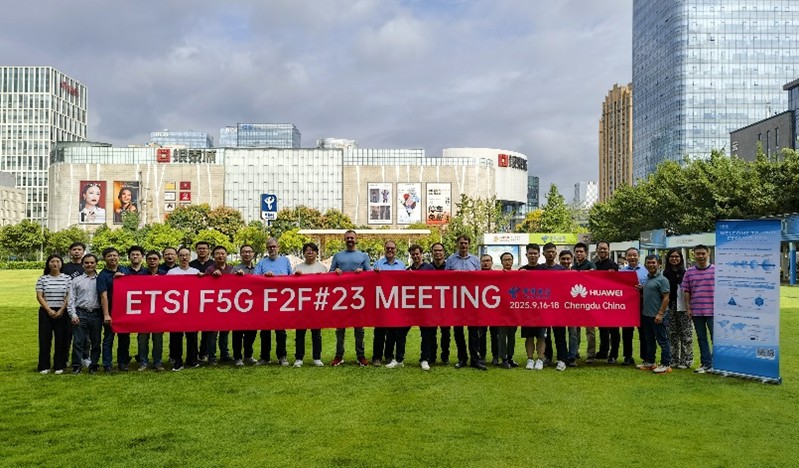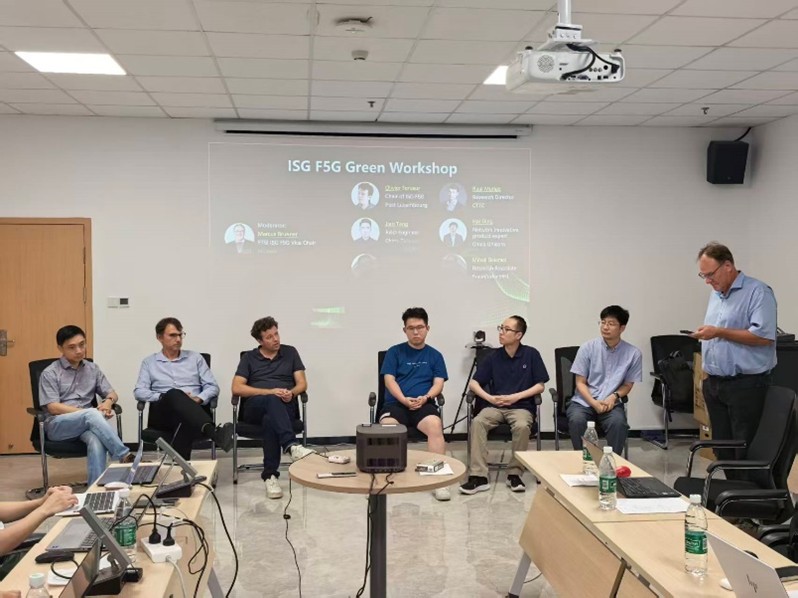ETSI ISG F5G Green Workshop: To Build a Greener Optical Network in F5G-A and Beyond
Green development has become a global consensus key priority to address the climate change, in which ICT plays an important role. In ETSI ISG F5G, Green Agile Optical network (GAO) has been defined as one of the six key characteristics of F5G-A.
In the week of September 15th ~ 18th 2025, the ETSI F5G F2F#23 was held in Chengdu, China, hosted by China Telecom. On 17 September 2025 during the F5G plenary meeting, a workshop on "Green Optical Network" was held. Seven experts from network operators, vendors and academia in the area of optical communication shared their visions, scenarios and technologies to enable a greener optical network.

This workshop was aimed at discussing the key requirements, enabling technologies and standard needs for green optical networks in the era of F5G-A and beyond. The topics in this workshop cover different F5G-A network segments including optical transport network, access network, home broadband network and industrial network.

- Olivier Ferveur from POST Luxemburg, Chair of ETSI ISG F5G, introduced the worldwide challenges on climate changes brought by CO2 emission, especially the sources of CO2 emission in the telecommunications industry. He also shared the related normalisations and standards in ITU-T SG5 and ETSI TC EE, and the potential roles the ISG F5G might play in the green optical network topic, including carbon emission measurement and carbon footprint aspects.
- Raul Muñoz, Research Director of CTTC, introduced several use cases on energy efficiency management in F5G-A networks, and the solutions and deployment in the ADRENALINE testbed. The results show the comprehensive energy monitoring and the closed-loop automation on network optimisation for energy saving.
- Jian Tang, R&D engineer of China Telecom, introduced how China Telecom achieves the green energy saving under the Chines Dual Carbon Strategy. Specifically, he showed the energy saving solution in PON Access Network, which applies the "time-division shutdown energy-saving" policy in PON. The pilot result shows that a single PON port can save about 7.3 kWh/year, without user complaint claimed.
- Hai Ding, Network innovative product expert of China Unicom, shared the technologies on FTTR green energy conservation. AI technologies are introduced in home network, to formulate energy conservation strategies based on the factors such as real-time status of home networks, user behaviour prediction, and business and terminal characteristics.
- Ning Wang, Senior Engineer of China Mobile, introduced the energy saving technologies for 50G PON in 10-Gigabit optical broadband era. Due to the introduction of new components in 50G PON system to solve the optical power budget bottleneck, equipment power consumption will be dramatically increased. In the presentation, both static and dynamic energy saving technologies were investigated to lower down the overall energy consumption of 50G PON.
- Mihail Balanici, Research Associate of Fraunhofer HHI, gave us a talk on the evaluation of the environmental impact of ICT solutions for manufacturing industry. He introduced the standards and PoCs in ITU-T and ETSI ISG F5G, and showed that PON-based ICT solution cuts direct GHG emissions at first-order impacts, compared to Ethernet switch-based infrastructure.
- Xiang Wang, Director of Access Technology Lab of Huawei Technologies, emphasised the importance of net-zero emissions and climate resilience, and the strong requirements of power saving brought by the rapid increasing traffics in the networks. He also showed the AI enhanced power saving solutions in both optical Access Network and FTTR home network, at all the module, device and network levels.
In the following panel discussion, the panellists believe that it is critical to initiate the research and standardisation work on the topic of green optical network. New GRs (Group Reports) are expected to be created in ISG F5G as the first step, starting from use case definition, requirement analysis and existing standard investigation. Follow-up GRs and GSs (Group Specifications) will be created to develop the technology-specific green optical network standards in the era of F5G-A and beyond.

